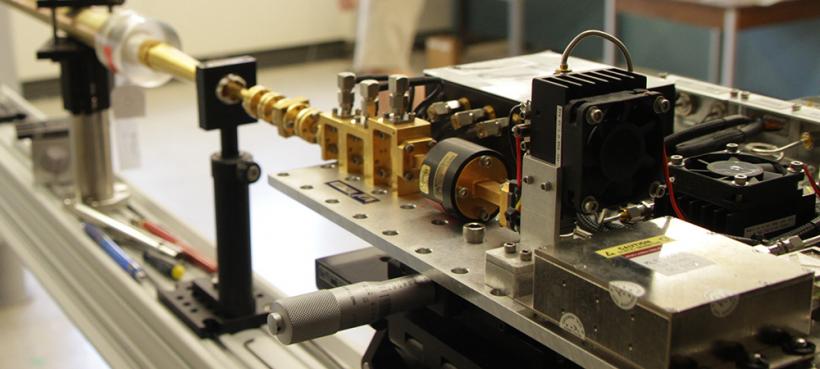
The generation of high power electromagnetic waves and particle beams is closely related to plasma physics, fusion, and magnetic resonance research with cross-cutting physics and technology. The PSFC Waves and Beams group conducts research on novel sources of electromagnetic waves (lasers/masers), on the acceleration of particle beams, and on the transport of these waves and beams.
Understanding and developing high-frequency, high-power microwave sources is a major research theme. A gyrotron is a form of microwave tube in which an electron beam rotating (or gyrating) in the high magnetic field of a superconducting magnet emits high frequency microwaves. Research is aimed at increasing the efficiency and the frequency of gyrotrons and the development of low-loss transmission lines. Gyrotrons operating at terahertz frequencies (250-600 GHz) and power levels of 10 to 100 Watts are also being developed for enhancing Nuclear Magnetic Resonance (NMR) spectroscopy. In addition to gyrotons, PSFC scientists investigate other novel sources and amplifiers. For example, a 10 MW, 2.856 GHz backward wave oscillator that utilizes a metamaterial structure, consisting of a periodic array of split ring resonators, has been built. Also, an Overmoded Traveling Wave Tube (TWT) operating at 94 GHz was recently constructed using an overmoded slow wave structure. Operating at 30.6 kV, 250 mA, the TWT achieved 21 dB linear gain with 27 W output power, paving the way to higher powers in the terahertz frequency region.
Knowledge from source development can be applied to creating high-gradient accelerators which could greatly reduce the size and cost of future particle accelerators. PSFC researchers operate a 25 MeV, 17 GHz electron accelerator, the highest frequency stand-alone accelerator in the world and are testing the breakdown rate of copper and hybrid (copper plus dielectric) cavities at accelerating gradients exceeding 90 MV/m.
Professor Richard Temkin
temkin@mit.edu